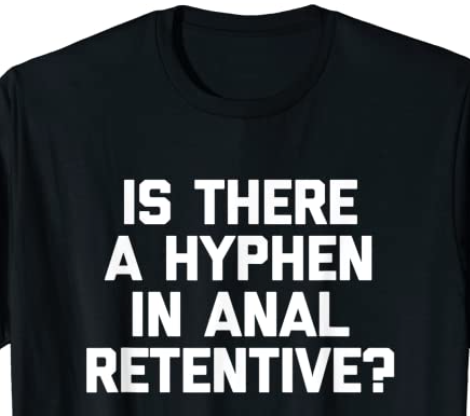Logical Transition Examples—To Emphasize or Expand
 Complex cases often require complex lines of argument. The downside, of course, is that a tired reader can easily get lost when sifting through the various levels of your argument. Use the phrases below to highlight the big takeaways and keep your reader on track.
Complex cases often require complex lines of argument. The downside, of course, is that a tired reader can easily get lost when sifting through the various levels of your argument. Use the phrases below to highlight the big takeaways and keep your reader on track.
- Case citations have been replaced by “. . .” to shorten these passages and to allow you to digest them more easily.
Above all
- Example from Justice Sotomayor: “No doubt, this Court must guard zealously against unwarranted impositions upon ‘the hard-working judges of the [Courts of Appeals].’ . . . Clearly, however, no judges would privilege their workloads above all other considerations, particularly courts’ interest in the fair administration of justice.”
- Example from Justice Kavanaugh: “Ratified in 1791, the First Amendment provides that Congress shall make no law ‘abridging the freedom of speech.’ Above ‘all else, the First Amendment means that government’ generally ‘has no power to restrict expression because of its message, its ideas, its subject matter, or its content.’”
- Example from Justice Kennedy: “These are the easily identified attributes of any constitutionally adequate habeas corpus proceeding. But, depending on the circumstances, more may be required. Indeed, common-law habeas corpus was, above all, an adaptable remedy. Its precise application and scope changed depending upon the circumstances.”
All the more (X) because (Y)
- Example from Paul Clement: “In short, judicially revising written description law would repudiate decades of law and practice and require significant changes in USPTO’s public guidance and its examination procedures. Under these circumstances, it would require an exceptionally weighty justification to disrupt that well-established law. That is all the more true because the written description requirement is a pure question of statutory interpretation—meaning that Congress can correct any mistake it sees in the well-established precedent.”
- Example from Lisa Blatt: “The First Amendment has never tolerated laws based on blatant animus towards a speaker and its views. Here the discrimination is all the more offensive to the First Amendment because the law seeks to restrict a massive swath of truthful, beneficial, and FDA-regulated speech concerning whether drugs can save or improve human life in an area marked by scientific and medical complexity and rapid technological evolution.”
- Example from Neal Katyal: “In other words, like any other party, an intervenor can invoke a court’s power to decide issues and to impose burdens on others. A district court cannot grant a motion under Rule 24(a) and authorize an intervenor to exercise these rights unless it determines that the intervenor has satisfied the Article III standing requirements. . . . That is all the more so because granting a motion to intervene expressly informs the original parties that the intervenor is entitled to ‘full party status,’ with all the burdens, rights, and privileges that entails.”
All the more reason
- Example from Josh Rosenkranz: “Is that a peculiar hypothetical? Of course—so are Respondents’ and the Ninth Circuit’s. And § 630(b) is a peculiarly drafted statute. But that is all the more reason to follow tried-and-true interpretive methodologies, considering each word in its context. And for the governmental clause, the first sentence—and particularly, the word ‘person’—provides critical context.”
- Example from Paul Clement: “Whether provisions of the ACA are severable from the pre-existing statutory schemes that they amend says nothing about whether they are severable from the ACA. If anything, the fact that Congress legislated against a ‘background’ of statutes that do contain severability clauses, is all the more reason to conclude that Congress acted deliberately when it omitted the severability clause included in earlier versions of the Act, particularly given that ‘Congress fully anticipated legal challenges to the constitutionality of’ the mandate.”
- Example from Lisa Blatt: “Respondent also laments that Congress passed the 340B Act without giving 340B entities a right to enforce the Act in court. . . . That deliberate choice by Congress is all the more reason to preclude courts from creating such remedies under common law.”
By extension
- Example from Walter Dellinger: “These provisions were coupled with declarations that standing armies are ‘dangerous to liberty’ and should not be ‘maintained’ or ‘kept up.’ Other state constitutions did not address arms possession directly but stressed the need for militia—and, by extension, privately owned military arms—for the common defense in place of a standing army. With minor variations, the Delaware, Maryland, and Virginia constitutions recognized that ‘well-regulated militia’ provide ‘the proper, natural, and safe defence’ of a ‘free State’ or ‘free government’ and that ‘standing armies are dangerous to liberty.’”
- Example from Don Verrilli: “Yet respondents miss the essential point of those decisions. The vibrant religious pluralism that the First Amendment (and, by extension, RFRA) protects is a guarantee of freedom of conscience for all. . . . For that very reason, these provisions cannot be invoked to justify religious exemptions from neutral laws when those exemptions would come at the expense of other members of society who may hold different beliefs and whose own statutory rights and autonomy, and, indeed, free exercise of religion, may be compromised if such exemptions were granted.”
- Example from Justice Gorsuch: “Of course, the kinds of criminal trespasses Congress regulated as early as 1790 were not themselves commercial. But a trespass against even one individual Indian could disrupt commerce with that individual. . . . By extension, such a trespass could disrupt dealings with other members of the Tribe and with other allied Tribes too. . . . Recognizing this, the framers entrusted Congress with the power previously exercised by the British Parliament to ‘restrain the disorderly and licentious from intrusions’ by non-Indians against even individual Indians—all to preserve functioning channels of trade and intercourse ‘with the Indians.’”
Especially
- Example from Justice Scalia: “Congress could have written §841(b)(1)(C) to impose a mandatory minimum when the underlying crime ‘contributes to’ death or serious bodily injury, or adopted a modified causation test tailored to cases involving concurrent causes, as five States have done, . . . . It chose instead to use language that imports but-for causality. Especially in the interpretation of a criminal statute subject to the rule of lenity, . . . , we cannot give the text a meaning that is different from its ordinary, accepted meaning, and that disfavors the defendant.”
- Example from Justice Kagan: “In short, Congress wrote the removal bar’s except clause in just the way a reader of legislation would expect—and not in the wholly irregular way Cyan proposes for the except clause at issue here. Especially given the two provisions’ ‘interrelationship and close proximity,’ . . . , the one conforming amendment highlights how far Cyan seeks to stretch the text of the other.”
- Example from Justice Kavanaugh: “Absent a stay, parties also could be forced to settle to avoid the district court proceedings (including discovery and trial) that they contracted to avoid through arbitration. That potential for coercion is especially pronounced in class actions, where the possibility of colossal liability can lead to what Judge Friendly called ‘blackmail settlements.’”
Even more (so)
-
Example from Seth Waxman: “Nothing in the FDCA, the NLEA, FDA’s regulations, or the preambles to those regulations suggests that, through its regulations, FDA was tasked or even intended to define the outer contours of what makes a juice label misleading. Rather, even more so than in Wyeth, FDA’s regulations bespeak an intent to set a floor—but not a ceiling—on the adequacy of labeling.”
- Example from Kannon Shanmugam: “Remarkably, petitioners seemingly concede that the foregoing interpretation is the ‘most natural’ interpretation of the relevant statutory text. . . . Even more remarkably, petitioners now offer an alternative interpretation that they did not offer below (or in their petition for certiorari)—an interpretation so novel that petitioners cannot identify a single court to have adopted it.”
- Example from Don Verrilli: “As the Register of Copyrights explained: secondary liability doctrines are critical to the effective functioning of our copyright system, and even more so in the new digital environment. They allow copyright owners to focus their enforcement (and licensing) efforts on those entities that foster infringing activity and have the resources and wherewithal to either pay licensing fees or satisfy an infringement judgment, without bringing costly, time-consuming and usually futile actions against multiple, mostly judgment-proof individual defendants.”
If anything
- Example from Justice Scalia: “Most of the state laws cited by the dissent, the Model Act, and the treaty postdate the 1986 federal money-laundering statute by several years, so Congress was not acting against the backdrop of those definitions when it enacted the federal statute. If anything, they show that “proceeds” is ambiguous and that others who believed that money-laundering statutes ought to include gross receipts sought to clarify the ambiguity that Congress created when it left the term undefined.”
- Example from Justice Kagan: “But the kinds of reasons we have most often held sufficient in the past do not help Kimble here. If anything, they reinforce our unwillingness to do what he asks.”
- Example from Paul Clement: “To put it mildly, one would expect to ‘see some affirmative indication of intent’ if Congress actually meant to make such a departure. . . . After all, Congress does not ‘hide elephants in mouseholes,’ . . . let alone in parentheticals . . . . Indeed, if anything, Congress’ addition of ‘(or for the benefit of)’ in §546(e) only underscores the textual and structural interconnection between §546(e) and the cross-referenced avoidance provisions, because those provisions allow a trustee to avoid specified transfers made not only ‘to’ but also ‘for the benefit of’ certain creditors.”
In effect
- Example from Justice Kagan: “And those newly favored plans, once again, are simply those ‘maintained by a principal purpose organization’—irrespective of their origins. In effect, Congress provided that the new phrase can stand in for the old one as follows: ‘The term “church plan” means a plan established and maintained by a church [a plan maintained by a principal-purpose organization].’”
- Example from Seth Waxman: “And the FDA cannot make approval of a biosimilar effective until 12 years after first licensure of the reference product. . . . In effect, whereas a sponsor had previously enjoyed unlimited control over whether another company could rely on its product and clinical data to gain approval for a competing drug, the BPCIA limited that right to a 12-year data exclusivity period.”
- Example from Kannon Shanmugam: “A public-availability requirement is consistent with the fundamental compromise underlying our Nation’s patent system. A patent, in effect, is a trade. An inventor gives the public a useful invention and gets a monopoly in exchange.”
In fact
- Example from Chief Justice Roberts: “It follows that when a President suspends entry in response to a diplomatic dispute or policy concern, he may link the duration of those restrictions, implicitly or explicitly, to the resolution of the triggering condition. . . . In fact, not one of the 43 suspension orders issued prior to this litigation has specified a precise end date.”
- Example from Justice Kagan: “After all, the Ninth Circuit’s ‘weapons’ example is just the tip of the iceberg: Courts can go much further in reconceiving indivisible statutes as impliedly divisible ones. In fact, every element of every statute can be imaginatively transformed as the Ninth Circuit suggests—so that every crime is seen as containing an infinite number of sub-crimes corresponding to ‘all the possible ways an individual can commit’ it.”
- Example from Paul Clement: “This Court has never had the same qualms about the essentially judicial task of fashioning equitable relief to stop ongoing invasions of constitutional rights. In fact, the Court has pointed to the availability of equitable relief as counseling hesitation in extending Bivens and ‘as the proper means for preventing entities from acting unconstitutionally.’”
In other words
- Example from Justice Scalia: “In the Government’s view, there can be no outside basis in a sham partnership (which, for tax purposes, does not exist), so any partner who underpaid his individual taxes by declaring an outside basis greater than zero committed a valuation misstatement. In other words, the penalty flows logically and inevitably from the economic-substance determination.”
- Example from Lisa Blatt: “And § 113(b) provides a critical textual clue to the scope of such ‘controversies’: federal courts have jurisdiction over all of them, ‘[e]xcept as provided in subsections [113](a) and [113](h).’ . . . In other words, those subsections describe particular types of ‘controversies arising under [CERCLA]’ that fall outside federal district courts’ jurisdiction.”
- Example from Justice Kavanaugh: “In short, because a court must exhaust all the tools of statutory interpretation before resorting to the rule of lenity, and because a court that does so often determines the best reading of the statute, the rule of lenity rarely if ever comes into play. In other words, ‘if lenity invariably comes in “last,” it should essentially come in never.’”
In particular
- Example from Chief Justice Roberts: “Drawing on the principles applied in our student speech cases, we have held in the Fourth Amendment context that ‘while children assuredly do not “shed their constitutional rights . . . at the schoolhouse gate,” . . . the nature of those rights is what is appropriate for children in school.’ . . . In particular, ‘the school setting requires some easing of the restrictions to which searches by public authorities are ordinarily subject.’”
- Example from Justice Kagan: “The Government contends that this problematic instruction looks more accurate when viewed in context. In particular, the Government points to the District Court’s prefatory ‘umbrella instruction’ that to aid or abet a crime, a defendant must ‘willfully and knowingly seek[ ] by some act to help make the crime succeed.’”
- Example from Justice Sotomayor: “It has licensed images of the works for commercial and editorial uses. In particular, after Prince died in 2016, Condé Nast contacted AWF about the possibility of reusing the 1984 Vanity Fair image for a special edition magazine that would commemorate Prince. Once AWF informed Condé Nast about the other Prince Series images, however, Condé Nast obtained a license to publish Orange Prince instead.”
Indeed
- Example from Justice Kagan: “We therefore do not see how the ‘umbrella’ statement could have cured the court’s error. Indeed, a different contextual feature of the case would only have amplified that mistake. As earlier described, the prosecutor asserted in closing argument that the court’s test was easily satisfied because ‘a person cannot be present and active at a drug deal when shots are fired and not know their cohort is using a gun.’”
- Example from Lisa Blatt: “If respondents are PRPs, their unauthorized restoration remedy undisputedly constitutes the kind of unauthorized ‘remedial action’ that § 122(e)(6) bars. Indeed, Montana law requires plaintiffs seeking restoration damages to actually remediate their property. . . . Accordingly, as PRPs, respondents cannot invoke state law to compel unauthorized remedial action.”
- Example from Justice Kavanaugh: “To that end, Congress may enact—and often has enacted—legislation to address the modern water needs of Americans, including the Navajos, in the West. Indeed, Congress has authorized billions of dollars for water infrastructure for the Navajos.”
Not only X, but (also) Y
- Example from Justice Kagan: “The IRS has authority to summon not only ‘the person liable for tax,’ but also ‘any officer or employee of such person,’ any person having custody of relevant ‘books of account,’ and ‘any other person the [IRS] may deem proper.’”
- Example from Justice Sotomayor: “States do regulate nonjudicial foreclosures, . . . the extent and method of those protections can vary widely, and the FDCPA was enacted not only ‘to eliminate abusive debt collection practices’ but also ‘to promote consistent State action to protect consumers against debt collection abuses[.]’”
- Example from Justice Kavanaugh: “Under the 1868 treaty, the Navajo Reservation includes not only the land within the boundaries of the reservation, but also water rights.”
Particularly
- Example from Paul Clement: “Resolving such claims is the bread-and-butter of federal courts, and wholly beyond the authority of the agency itself, which can hardly evaluate claims going to its very existence or enjoin its own operation. Providing access to federal district court is particularly vital when, as here (as the government never denies), a private party will suffer irreparable constitutional injury absent early judicial intervention.”
- Example from Justice Thomas: “The fact that some bad actors took advantage of these platforms is insufficient to state a claim that defendants knowingly gave substantial assistance and thereby aided and abetted those wrongdoers’ acts. And that is particularly true because a contrary holding would effectively hold any sort of communication provider liable for any sort of wrongdoing merely for knowing that the wrongdoers were using its services and failing to stop them.”
- Example from Lisa Blatt: “Under Skidmore . . . deference ‘will depend upon the thor- oughness evident in [the agency’s] consideration, the validity of its reasoning, its consistency with earlier and later pronouncements, and all those factors which give it power to persuade.’ . . . Agency deference is particularly warranted in the context of complicated, technical regulatory regimes like ERISA. . . . ‘ERISA is a comprehensive and reticulated statute,’ . . . and the agencies possess ‘specialized experience … on the subtle questions’ in this ‘highly detailed’ regulatory scheme[.]”
Put another way
- Example from Chief Justice Roberts: “To the extent they do, such activities or land uses may be regulated. . . . Put another way, certain forms of nonmember behavior, even on non-Indian fee land, may sufficiently affect the tribe as to justify tribal oversight.”
- Example from Seth Waxman: “In explaining the basis for exhaustion, the Court has indicated that the Patent Act’s purpose of providing incentives to innovation is ‘fulfilled,’ . . . when a patent owner has ‘received all the royalty or consideration which he claims for the use of his invention[.]’ . . . Put another way, ‘[t]he test’ for exhaustion is whether ‘it may fairly be said that the patentee has received his reward for the use of the article.’”
- Example from Kannon Shanmugam: “When parties agree to delegate the authority to decide arbitrability to the arbitrator, they necessarily empower the arbitrator to decide whether a particular dispute falls within the range of disputes that the parties agreed to arbitrate. Put another way, the parties can be conceived to have entered into a freestanding, antecedent agreement providing that, if any dispute arose between them, the arbitrator would decide whether the dispute must be resolved by arbitration under the parties’ subsequent ‘substantive’ agreement.”
Put differently
- Example from Justice Scalia: “A court’s power to decide a case is independent of whether its decision is correct, which is why even an erroneous judgment is entitled to res judicata effect. Put differently, a jurisdictionally proper but substantively incorrect judicial decision is not ultra vires.”
- Example from Neal Katyal: “In Walden’s words, the same conduct that ‘create[s] a substantial connection with the forum State’ must also be ‘suit-related .’ . . . Put differently, the same conduct that ‘translate[s] into “contacts” with a particular State’ must also ‘give[] rise to th[e] litigation.’ . . . For specific jurisdiction to exist, therefore, an unbroken chain of causation must unite the defendant, the forum, and the litigation.”
- Example from Lisa Blatt: “Invalid verdicts simply do not represent the voice of the community ‘in any relevant sense.’ . . . Or put differently, the jury has not spoken in a way the law recognizes as legitimate and worthy of public respect. Society has no respect for a jury’s judgment that has been vacated, including, for instance, when a defendant engaged in conduct that the law does not make criminal.”
Simply put
- Example from Paul Clement: “That provision underscores both that there is nothing inherently incompatible between the FTC and district-court jurisdiction, and that the FTC itself is not equipped to prevent ongoing injury. Simply put, an existential challenge to the FTC’s very structure and composition is plainly not what Congress had in mind when it provided a mechanism for judicial review of FTC cease-and-desist orders.”
- Example from Neal Katyal: “If the employee comes to believe that the individual waiver was inequitable, she may unionize and bargain for a new contract that does not include such a waiver. Simply put, being party to an arbitration agreement that precludes class arbitration does not meaningfully prevent an employee from unionizing.”

- Example from Justice Jackson: “This all points to something key about what it means to use a trademark in the sense Congress prohibited[.] . . . Simply put, a ‘use in commerce’ does not cease at the place the mark is first affixed, or where the item to which it is affixed is first sold. Rather, it can occur wherever the mark serves its source-identifying function. So, even after a trademark begins to be ‘use[d] in commerce’ (say, when goods on which it is placed are sold), that trademark is also ‘use[d] in commerce’ wherever and whenever those goods are in commerce, because as long as they are, the trademark ‘identif[ies] and distinguish[es] … the source of the goods.’”
 By
By



